Content
"Silent night, holy night"
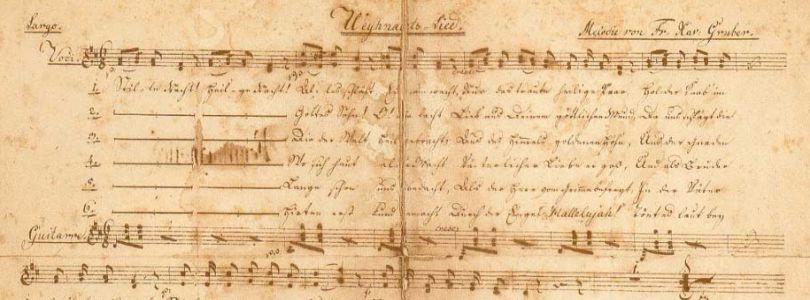
Joseph Mohr´s autograph of the song, 1820
The song, its history and the trade marks
It is referred to as the “eternal song”: “Silent Night, Holy Night” (Stille Nacht, Heilige Nacht), probably the most famous Christmas song in the world. The song is sung all over the world in the most diverse languages and dialects. It is assumed that there are up to 300 translations, including a Klingon version.
175th anniversary of death: Joseph Mohr
Born on 11 December 1792 in the Salzburg poorhouse, as an illegitimate child, suffering from lung disease from an early age: Joseph Franz Mohr had a difficult start in life. And it was to remain difficult for the musically gifted, intelligent boy. Thanks to the support of the cathedral vicar, however, he was able to attend grammar school and study theology.
Born out of wedlock, he needed special authorisation from the Pope to be ordained a priest. Afterwards, he made ends meet by working in various temporary positions as a "coadjutor". One station was Mariapfarr, where he wrote a religious poem full of hope for peace and salvation. The next stop was Oberndorf, where on Christmas Eve 1818 he asked his friend, the schoolmaster and organist Franz Xaver Gruber, to set this poem to music. Both performed the Christmas carol for the first time after the evening mass in a side chapel.
Mohr, who always stood up for the poor and sometimes came into conflict with the church authorities because he lacked the "necessary spirit of subordination", soon had to resume his restless existence until he finally received a permanent position as vicar in Wagrain in 1837. Here he was able to work successfully for a decade on the spiritual and social needs of his parish. Mohr died on 4 December 1848.
All kinds of legends entwine around the origin of the song. People automatically associate it with a snow-covered village up in the Alps. But Oberndorf, where the song was first sung on 24 December 1818, lies in a rather flat area on the river on the edge of the mountains, a little north of Salzburg.
These were difficult times for the bargee village, whose inhabitants mainly lived from the salt transport on the Salzach river. The Napoleonic Wars had bled the country dry; the small border town belonged alternately to Bavaria, Salzburg and finally to Austria. The “year without summer” of 1816 with its climatic deterioration due to a volcanic eruption in Indonesia was followed by crop failures. Grain prices rose considerably; salt trade stagnated. These were times when people bitterly needed consolation.
Joseph Mohr from Salzburg wanted to give people comfort. The clergyman (1792-1848), born in the poorhouse himself, was strongly committed to the “ordinary people” in Salzburg. He is even said to sometimes have bought the prey of poachers, passing it on to the poor. In 1816, in Mariapfarr in Lungau county he wrote a poem, which evoked the joy of the birth of Jesus and the associated hope for people:
Silent night, holy night,
Shepherds quake at the sight.
Glories stream from heaven afar,
Heav’nly hosts sing Alleluia;
Christ the Savior is born
Christ the Savior is born
Two years later, Mohr was an assistant priest in Oberndorf and had made friends with the village school teacher Franz Xaver Gruber (1787-1863) from Arnsdorf, who earned an extra income as a local organist. On 24 December in the afternoon, Mohr gave his friend the poem and asked him to add music to it until the evening mass. Gruber came up with the ingenious, simple melody that every child knows today.
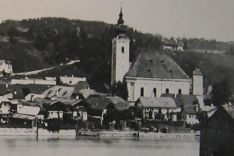
St. Nikola church in Oberndorf - where the song was first performed - was demolished at the beginning of the 20th century
And that very night, after the Christmas mass in St. Nikola church in Oberndorf, the two men recited the song for the first time: Gruber sang the bass voice, Mohr sang tenor and accompanied on the guitar. It was the world premiere of the “eternal song”.
The place of this magic moment no longer exists. Severely damaged by the many floods of the Salzach, the church (as well as a large part of the village) was later demolished. In 1937, it was replaced by the Silent Night Chapel (Stille-Nacht-Kapelle) with original benches from St. Nikola.
A song goes around the world
But how did this occasional composition come to world fame? The people from Oberndorf loved “their” new Christmas carol and from then on, they sang it for every Christmas mass. The organ builder Karl Mauracher, who repaired the instrument in St. Nikola, was so enthusiastic about the song that he wrote it down and passed it on in his native Tyrolia. A few years later, some poor families such as the Strassers or the Rainer siblings from the Zillertal went on musical wanderings through Germany singing Tyrolean folk songs. "Silent Night" turned out to be their Christmas "hit", though it was thought to be a folk song. In Leipzig the song became famous in 1832 and rapidly spread all over the world. In 1839, the Rainer Family apparently sang it in New York.
In 1854, the Prussian King Friedrich Wilhelm IV wanted to know more about his favourite song and ordered research to be carried out. Franz Xaver Gruber learned about it rather accidentally and gave information about the origin of his composition. Gruber thus learnt during his lifetime that his song had become a "world hit", while Mohr unfortunately did not; he died in 1848. Neither of them profited financially - collecting management organisations such as GEMA did not yet exist. In the USA, “Silent Night, Holy Night” was thought to be an old English folk song until the 1940s.
The song and the trade marks
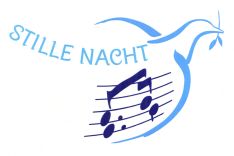
Word/figurative mark 006827703 registered by Stille-Nacht-Botschaft GmbH, Oberndorf
Of course, the popularity of the song tempts people to try profiting from it by means of IP rights. SalzburgerLand Tourismus GmbH recently secured a word/figurative mark (017025057). The “Stille Nacht Botschaft” in turn had the word/figurative mark 006827703 registered in 2008, which particularly emphasizes the peace message of the song.
SalzburgMilch GmbH has filed for an EU trade mark for STILLE NACHT 017966639 for Nice class 29: milk products; cheese. In addition, recently, a chocolates manufacture called Reber had the word marks “Reber Stille Nacht heilige Nacht” (302017024249) and “Reber Stille Nacht” (302018009852) registered.
The mouse story
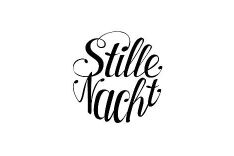
Word/figurative mark 017025057 registered by SalzburgerLand Tourismus GmbH
A bakery in Hallein (where composer Gruber lived and was buried) has secured the word mark “Stille Nacht Mäuschen” (009946252, "Silent night mouses") and sells chocolates pralines using this name.
The word mark includes an allusion to the anecdote according to which a guitar (at that time frowned upon as an instrument played in pubs) was used for the premiere of the song only because a mouse is said to have nibbled on the bellows of the church organ so that it was no longer usable.
In fact, certainly, Gruber and Mohr took the guitar simply owing to a lack of time. Their rather spontaneous action did not leave any room for larger preparations such as an organ composition.
Current exhibitions about the song
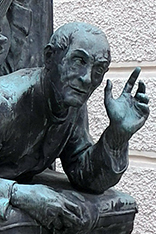
We don´t know how Mohr looked like, but this is how a sculptor imagined him for a statue in Oberndorf
Practically all famous singers from pop to classical music have recorded "Silent night" at some point. Bing Crosby's 1937 version alone sold up to 30 million copies.
The song has been part of UNESCO's intangible cultural heritage since 2011.
Joseph Mohr's poem has six verses only three of which are usually sung today. Below you can finally read verse four in which the peace message is particularly underlined:
Silent Night! Holy Night!
By his love, by his might
God our Father us has graced,
As a brother gently embraced
Jesus, all nations on earth,
Jesus, all nations on earth.
Text: Dr. Jan Björn Potthast; Pictures: Autograph digitized by Stille-Nacht-Gesellschaft - via Wikimedia Commons, via Wikimedia Commons, Stille Nacht Museum Hallein / Coen-Kossmann, Eweht CC by SA 4.0 via Wikimedia Commons
Last updated: 10 December 2025

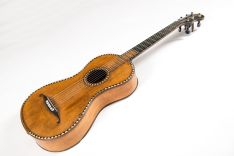
Not only protecting innovations
Social Media